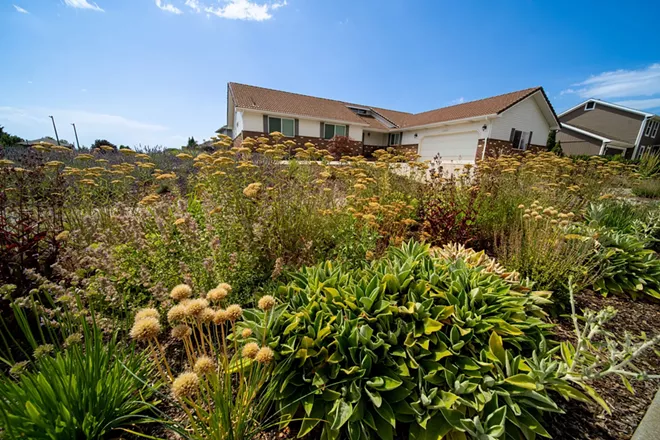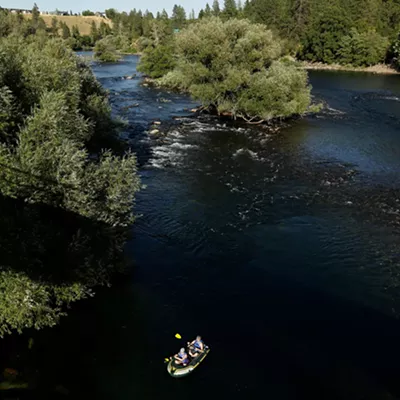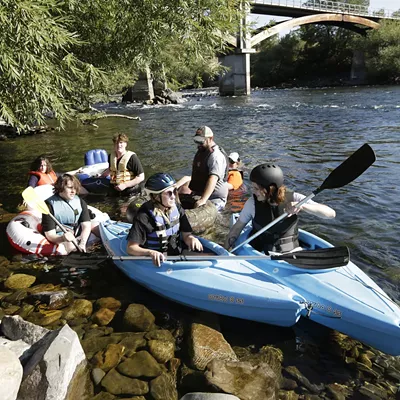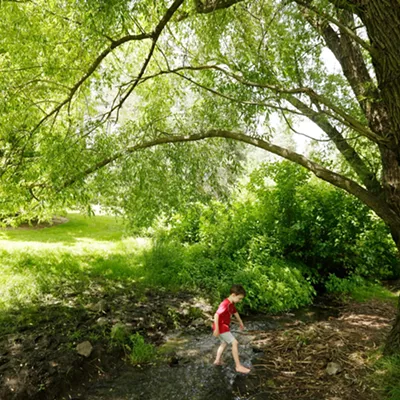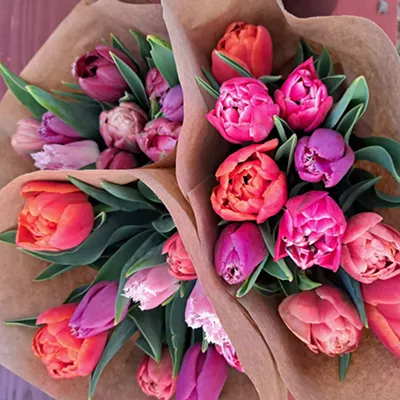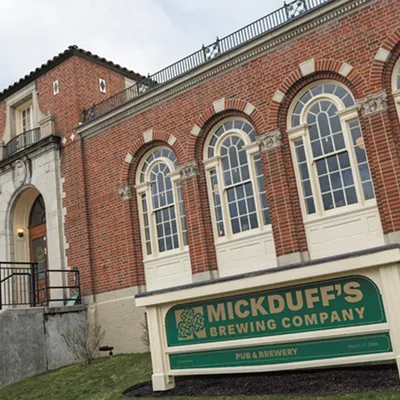Effective landscaping can do more than beautify home exteriors. It creates outdoor living spaces and interacts with sun and other elements to provide shade and windbreak where it's needed most. The plants themselves — groundcover, flowers, shrubs, trees — also provide a vital eco-link, such as food for pollinators and habitat for critters.
And yet living things, as we know, require water, some much more than others — including lawns, which are at the center of a national debate about water conservation. In May 2022, for example, the Spokane City Council did something communities in the South and Southwest had already done: It restricted lawn watering from June through October, reserving the option to enact tougher restrictions in 2023.
"Unlike [other areas] we don't have a secondary place to get water here," says Spokane County Master Gardener Kris Moberg-Hendron. "We have one: the aquifer."
In 2005, Moberg-Hendron replaced her lawn with native and drought-tolerant plants that survive — even thrive — with little or no water besides rainfall. Called xeriscaping, its principles can be applied to any portion of the home's exterior (even gardens).
At Washington State University's Spokane County Extension facility, a xeriscaped strip of land along its North Havana Street entrance helps visitors envision what that might look like on their property. The WaterWise Demonstration and Research Garden, as it's called, is roughly 30 by 130 feet of ornamental grasses, perennial plants and annuals, embedded in various colors and types of mulch.
Along the fenceline, clumps of Karl Foerster grass, which can reach a height of 6 feet, offer visual privacy and attractive feathery stalks year-round. Flowering plants like bee balm, California fuschia, goldenrod and iris add color March through October and provide food for pollinators, while sage, thyme and chives can be used in human food.
All the plants are nestled in mulch, from crushed rock to bark chips, that is visually appealing and water-wise, Moberg-Hendron says.
"It keeps the sun off the soil so it doesn't get too hot, it keeps wind from pulling water off the soil, it keeps the soil in place," Moberg-Hendron says. "It's insulation."
The WaterWise garden is a collaborative effort, providing research opportunities for Master Gardeners and a demonstration space for SpokaneScape. An innovative arm of the city's Public Works & Utilities department, SpokaneScape offers financial incentives to city water users who replace (or significantly reduce) lawns with drought-tolerant landscaping.
SpokaneScape's website provides comprehensive lists of native and drought-tolerant plants, tips for understanding soil, planting guides, design templates for laying out your new xeriscaped space, and certified professionals.
You don't have to live within city limits to benefit from available resources, however, which are also available at the Spokane County Extension office, including its WaterWise garden anyone can visit.
The garden has already proven valuable as an example of xeriscaping principles, Moberg-Hendron says.
During its initial creation in summer 2022, the garden designers put in drip irrigation to get fledgling plants going for the first few years, but someone accidentally turned it off during the hottest part of the summer. "And it still looked beautiful," she says.
Attend a free workshop at the Shadle Park Library from 6:30 to 7:30 pm every Wednesday, March 8 through June 10, to learn about such topics as rain barrel construction, landscape design, drip irrigation and more.
How much is xeriscaping going to cost you? That depends on the size of the job, what you're doing and your timeline. Renting turf removal equipment, for example, typically starts at $100 a day, while sheet mulching — laying cardboard or tarps over grass you want to kill — is free but can take several weeks to months.
Bark mulch is $5-8 per bag for small areas, a couple hundred plus delivery for several yards at a time, and close to free if you sign up for a service like chipdrop.com, which allows local arborists to drop their ground tree trimmings on your property.
You can spend a lot on irrigation systems, or do it yourself and get a soaker hose kit with 100 feet of hose for $40 from your local hardware store.
Your next expense is plants, which you can start from seed or buy from a nursery, knowing you'll pay more for larger ones. Also check out places like Spokane Conservation District and Spokane Community College's greenhouses, which sell good-quality plants at less-than-retail prices, or look online for people who have plants to give.
And if all that sounds like a lot to process just to save a little on your watering bill, maybe your first call should be to the WSU Extensions office to see how they can help you do more with less. ♦

